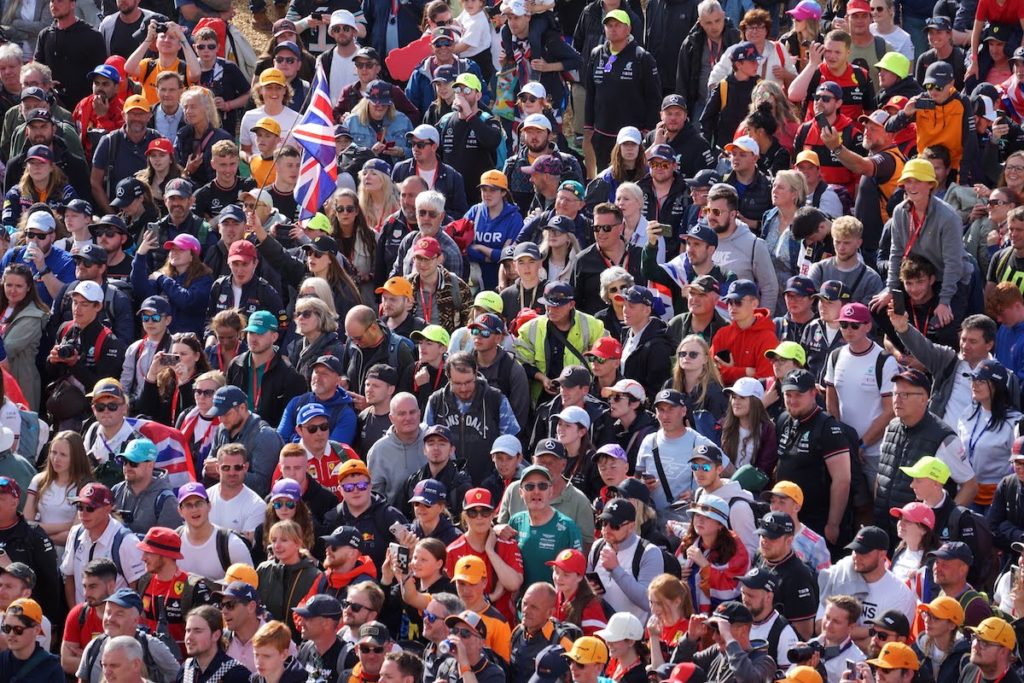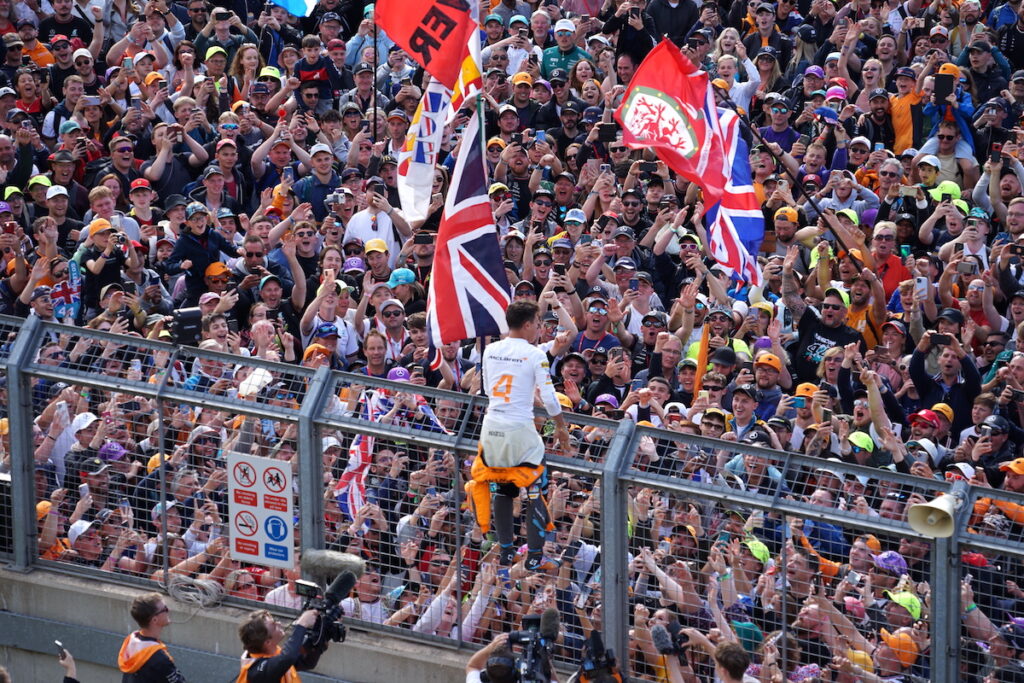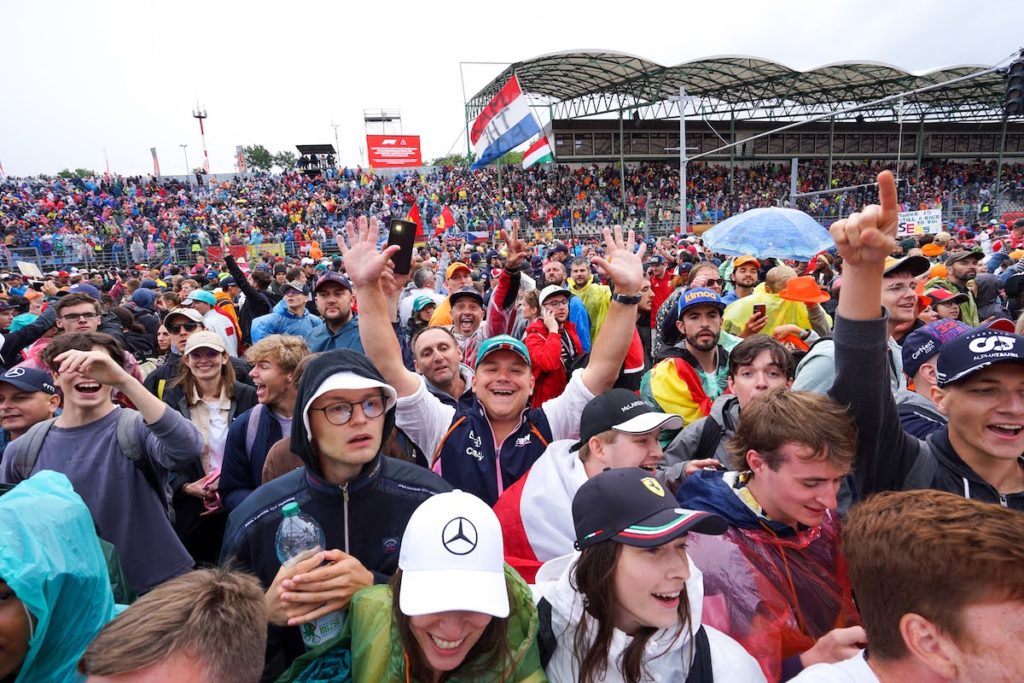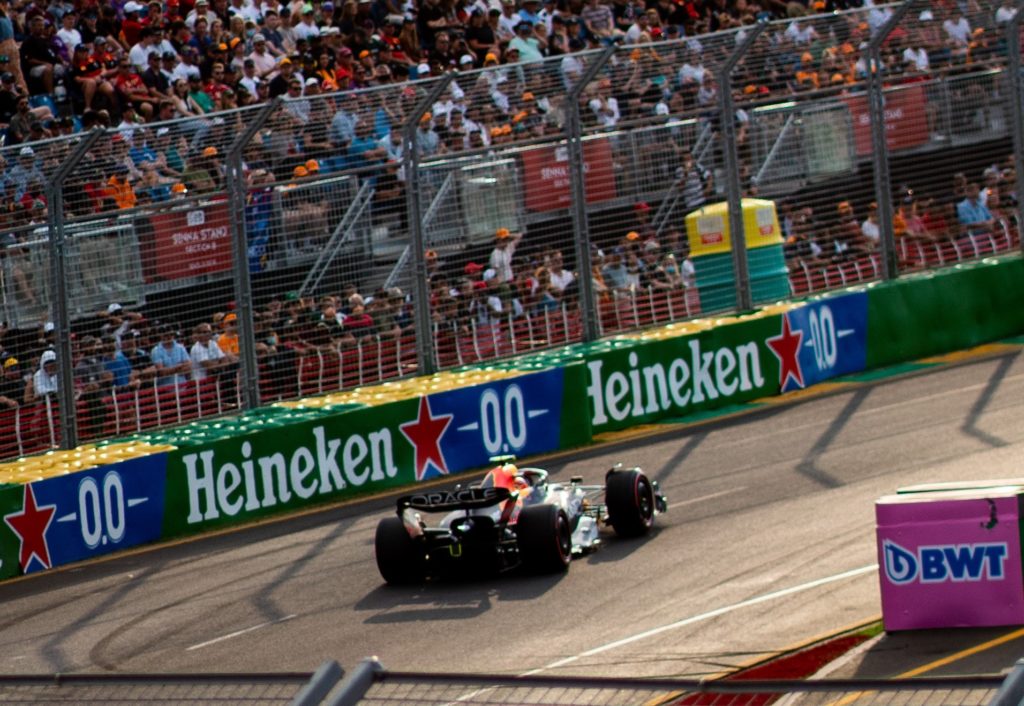
As Formula 1 attendance figures continue to rise across the globe, we take a look at which Grand Prix weekends were the best-attended in the sport’s history and which events have had the largest F1 race-day crowds.
Formula 1 attendance figures have been on the rise in recent years. A large number of events have attracted record crowds in the three seasons since races re-opened to fans following the coronavirus pandemic. The rise in audience numbers can be attributed to a number of factors, not least the continued success of the Netflix series Drive To Survive, which has introduced an entirely new audience to the sport.
In 2019, the final full season of racing before events were held behind closed doors due to the ongoing pandemic, 4.1 million fans attended the 21 races that year. In 2022, the first season in which every race was open to the public since the pandemic began, 5.7 million fans attended the 22 races, an increase of 39%. That number grew even further across the 22 races held during the 2023 season, to over 6 million. In the space of four years, the average weekend attendance rose from 195,000 to over 270,000.


With interest in attending Formula 1 races continuing to grow and tickets continuing to regularly sell out, there’s every chance the record attendance figures below could soon be broken.
What is the best-attended Formula 1 race weekend of all time?
With a four-day weekend attendance of 520,000, the 1995 Australian Grand Prix is the best-attended Formula 1 race weekend on record. 1995 marked F1’s final visit to the popular Adelaide street circuit and fans turned out in force for the final of 11 Formula 1 races in Australia’s fifth most populous city. It is the only Formula 1 race weekend to have had a weekend attendance larger than half a million.

The final race of the 1995 season saw Damon Hill take victory by two full laps – the only occasion on which a driver has achieved the feat in Formula 1 history. Michael Schumacher, who had already won the title, retired from the race. It was his final appearance with Benetton before moving to Ferrari in 1996. Race day itself was attended by 210,000 fans. At the time, it was a new record for the biggest recorded race day attendance (more on the race day attendance record below).
According to our research, 23 races have had confirmed attendances of over 350,000 in Formula 1’s 74-year history. Of those, 16 have taken place this decade. Behind the 1995 Australian Grand Prix, tied for second place on the list are the 2023 and 2024 British Grands Prix. Silverstone had an attendance of 480,000 over the four days of each race weekend, including 164,000 on race day alone in 2024 – both new records for the circuit which hosted the very first World Championship event in 1950.

Both the 2024 and 2023 Australian Grands Prix rank in the top five best-attended Grand Prix weekends, having had a 4-day attendance figure of over 452,055 in 2024 and a weekend figure of 444,631 in 2023. The Albert Park circuit – which took over Australian Grand Prix hosting duties from Adelaide in 1996 – has two further appearances in the top eight best-attended F1 races of all time. Close to 420,000 attended in 2022, while the inaugural 1996 event attracted a reported 401,000.
Throughout its history, Formula 1 has struggled to find stability in the American market. Now, however, the series has had the confidence to add two additional races in the United States – in Miami and Las Vegas – thanks to continued growth in interest stateside. The United States Grand Prix, which has been held at Circuit of The Americas since 2012, remains one of the best-attended races each season.

The 2022 United States Grand Prix weekend currently ranks as the sixth-best attended on record, with 440,000 passing through the circuit gates. The figure fell slightly in 2023 to 432,000 – a figure which still ranks seventh in the all-time list. COTA boss Bobby Epstein has ambitious hopes of United States Grand Prix attendances reaching 500,000 in the coming years.
The Best-Attended Formula 1 Race Weekends on Record
The table below shows the best-attended Formula 1 race weekend attendances on record according to official sources. Estimated weekend attendances are not included. More information about how Formula 1 attendance figures are calculated can be found below.
| Rank | Race | Venue | Weekend attendance |
|---|---|---|---|
| 1 | 1995 Australian Grand Prix | Adelaide | 520,000 |
| 2 | 2023 British Grand Prix | Silverstone | 480,000 |
| 3 | 2024 British Grand Prix | Silverstone | 480,000 |
| 4 | 2024 Australian Grand Prix | Albert Park | 452,055 |
| 5 | 2023 Australian Grand Prix | Albert Park | 444,631 |
| 6 | 2022 United States Grand Prix | Circuit of the Americas | 440,000 |
| 7 | 2023 United States Grand Prix | Circuit of the Americas | 432,000 |
| 8 | 2022 Australian Grand Prix | Albert Park | 419,114 |
| 9 | 2024 Mexico City Grand Prix | Autodromo Hermanos Rodriguez | 404,958 |
| 10 | 1996 Australian Grand Prix | Albert Park | 401,000 |
| 11 | 2022 British Grand Prix | Silverstone | 401,000 |
| 12 | 2023 Mexico City Grand Prix | Autodromo Hermanos Rodriguez | 400,639 |
| 13 | 2021 United States Grand Prix | Circuit of the Americas | 400,000 |
| 14 | 2022 Mexico City Grand Prix | Autodromo Hermanos Rodriguez | 395,902 |
| 15 | 2023 Belgian Grand Prix | Spa Francorchamps | 380,000 |
| 16 | 2021 Mexico City Grand Prix | Autodromo Hermanos Rodriguez | 372,000 |
| 17 | 2006 Japanese Grand Prix | Suzuka | 361,000 |
| 18 | 2004 Australian Grand Prix | Albert Park | 360,885 |
| 19 | 2022 Belgian Grand Prix | Spa Francorchamps | 360,000 |
| 20 | 2005 Australian Grand Prix | Albert Park | 359,000 |
| 21 | 1994 Japanese Grand Prix | Suzuka | 357,000 |
| 22 | 2019 British Grand Prix | Silverstone | 351,000 |
| 23 | 2024 Canadian Grand Prix | Circuit Gilles Villeneuve | 350,000 |
What is the Best-Attended F1 Race Day of All Time?
The biggest ever single day attendance for a Formula 1 race came on race day at the 2000 United States Grand Prix. The race marked Formula 1’s return to the United States for the first time since 1991. 250,000 fans were in attendance for F1’s first race on a road course layout of the iconic Indianapolis Motor Speedway.

The highest-capacity sports venue in the world, Indianapolis Motor Speedway has gathered large crowds for its annual Indianapolis 500 since the event was first held in 1911. The race was run as part of the Formula 1 World Championship between 1950 and 1960, though it rarely featured contemporary F1 drivers and was not open to Formula 1 cars. These events rank among the best-attended “F1” races. The best-attended Indianapolis races in this period were the 1952 and 1960 runnings, which had estimated race day attendances of 200,000.
The 2000 United States Grand Prix broke the record for the biggest race day attendance by 40,000. Before the Indianapolis race, the 1995 Australian Grand Prix had held the record for both the biggest weekend attendance and the biggest race day attendance.

Before the 1995 Australian Grand Prix, the 1986 Hungarian Grand Prix held the record for the largest race day crowd. The first race behind the Iron Curtain, F1’s inaugural visit to the Hungaroring attracted 200,000 fans. Hungary has been ever-present on the F1 calendar ever since 1986, though Sunday attendance has never been as high since. The 2023 Hungarian Grand Prix attracted 303,000 fans over the entire race weekend.
A few other races have had estimated, but unofficial, race day crowds of 200,000 or more. Among them are the championship-deciding 1951 Spanish Grand Prix, at which Juan Manuel Fangio claimed his first championship crown. Estimates put race day attendance at the Pedralbes circuit at 250,000, which would match the 2000 United States Grand Prix if accurate. Some sources even cite the attendance at the 1951 Spanish Grand Prix as high as 300,000. Other races on longer tracks – such as the original layout of Circuit de Spa-Francorchamps or the Nordschleife layout of the Nurburgring – also reportedly attracted similarly large estimated crowds.

The 1957 Pescara Grand Prix and the 1970 Mexican Grand Prix are two other notable events with crowds upward of 200,000. Such was the scale of the Pescara street circuit – 25.801km to be exact – tickets were not sold for the event. The 1970 Mexican Grand Prix, meanwhile, became a victim of its own success. Crowd control issues almost saw the race cancelled before it began. The trackside problems led to Formula 1 dropping Mexico from its calendar, eventually returning some 15 years later.
We have not included a full list of the biggest race day crowds in Formula 1 history as official single day figures are not as widely reported as the larger weekend attendance numbers, therefore making a definitive list impossible to put together.
How are Formula 1 attendance figures calculated?
The attendance figures in this article have been gathered from numerous sources, including FIA documents, official attendance numbers released by Formula 1 and race promoters, plus contemporary news reports.
It should be noted that reported attendance figures are not always accurate and the method by which attendees are counted can vary. A famous example of inaccurate attendance figure reporting came at the 2017 Canadian Grand Prix, when the reported attendance figure was retrospectively halved from 360,000 to 180,000.
Furthermore, the method by which attendees are counted can differ by circuit. Some promoters will include all operational staff, team members and holders of free tickets in addition to paying ticketholders in their attendance reports. Such practices can inflate the true attendance figure by tens of thousands.
For weekend attendances, fans who attended on multiple days of the weekend are counted for each day that they attended. The weekend attendance figure of 520,000 at the 1995 Australian Grand Prix, for example, does not mean that 520,000 different people attended – it could be as few as 130,000 who attended all four days of the race weekend.



The 2000 USGP at Indianapolis had more than 225,000 people on Sunday and more than 500,000 for the 3-days. Wikipedia says they drew 250K on Sunday alone. The only GP that could have topped it over the 3 days was 1995 Adelaide. Adelaide may not have even topped it at all. As you noted, Indy beat Adelaide by about 40,000 people on race day. It’s difficult to imagine a scenario where one GP draws 160K for Sunday and 360K for the other two days, while another GP pulls 225-250K on Sunday but fewer than 300K for the other two days.
How does the article that came out in Aug. 2023 know the attendance figures for the COTA race that happened in October 2023?
The article has been updated since Aug 2023, but the publish date not changed. I have now changed this to reflect that it includes 2023 attendance figures
Why did you not include the 2000 USGP at Indy in your ranking? It drew about 500K people and had around 225K on Sunday. I noticed you mentioned it in the article, but left it out of the ranking. It was much bigger than any of the crowds COTA has claimed (which were listed in the ranking).
Hi Tim, Indianapolis is not there because the weekend attendance figure for that race is not confirmed. We’ve included only confirmed weekend figures in that list. We do know that the 2000 race had 250,000 spectators on race day but figures for Friday and Saturday are not available. We’ve reached out to IMS to hopefully get some answers, then we can add it to the list!